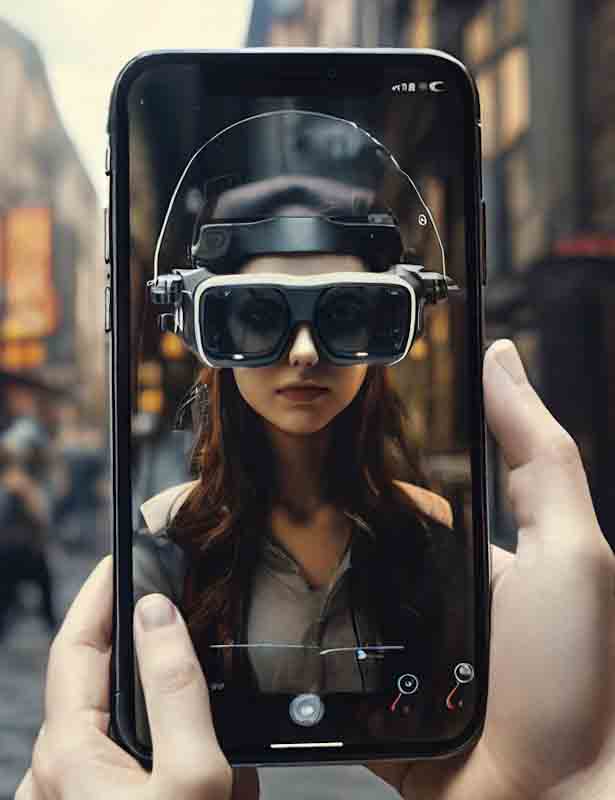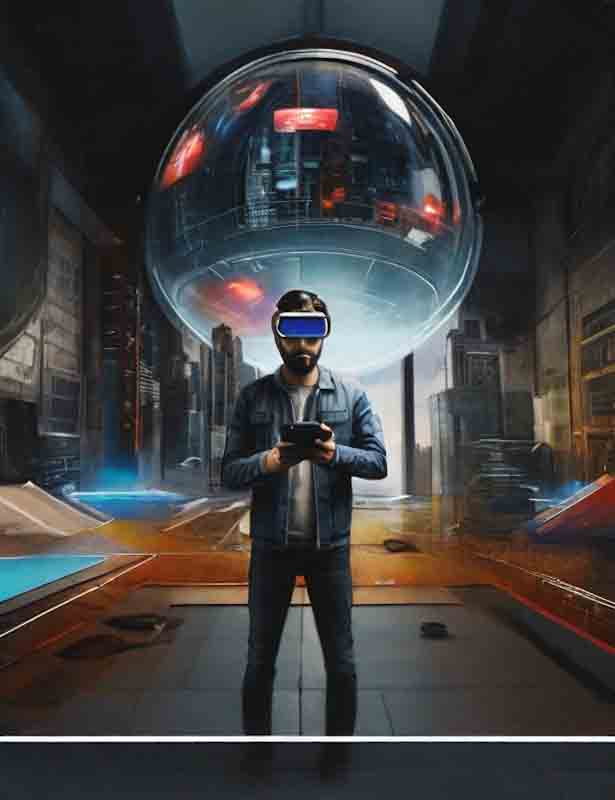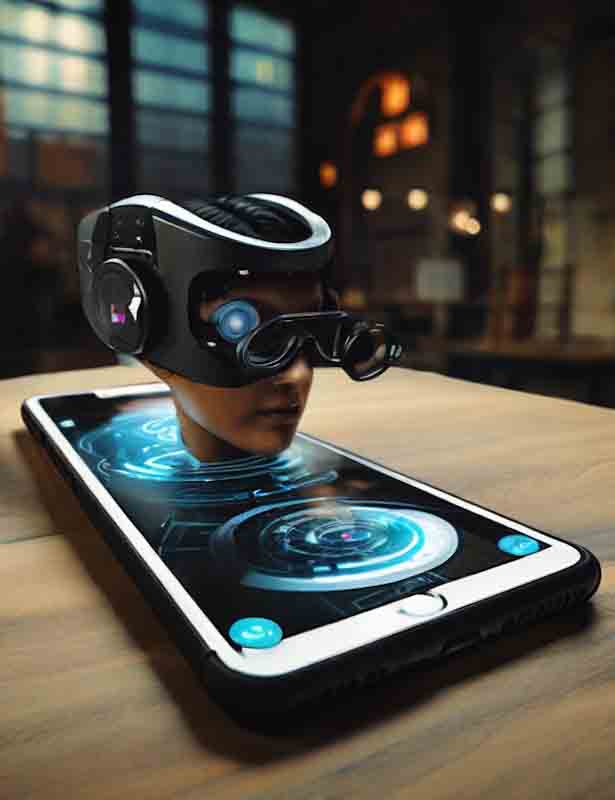Step into a realm where reality intertwines with the digital, where the mundane transforms into the extraordinary – welcome to the enchanting world of augmented reality (AR). Picture yourself donning a pair of sleek glasses or wielding a smartphone, poised to explore a universe where imagination knows no bounds.
Embarking on the AR Adventure:
 In the heart of AR lies a symphony of hardware, software, and boundless creativity. Imagine sleek glasses adorned with sensors and cameras, or smartphones armed with the power to unlock hidden realms. These technological marvels serve as portals, bridging the gap between the tangible and the intangible.
In the heart of AR lies a symphony of hardware, software, and boundless creativity. Imagine sleek glasses adorned with sensors and cameras, or smartphones armed with the power to unlock hidden realms. These technological marvels serve as portals, bridging the gap between the tangible and the intangible.
Crafting Digital Dreams:
Behind the curtain of AR, artisans craft digital wonders that dance with the real world. Three-dimensional marvels come to life, awaiting their moment to dazzle and enchant. From shimmering holograms to lifelike avatars, each creation is a testament to human ingenuity and technological prowess.
A Tapestry of Possibilities:
In the tapestry of AR, every thread tells a story. Wander through virtual landscapes that bloom amidst urban jungles, or witness historical figures stepping out of the annals of time. AR breathes life into textbooks, turning learning into an immersive odyssey, and transforms shopping sprees into grand adventures of discovery.
The Playground of Tomorrow:
 Venture into the realm of entertainment, where the lines between reality and fiction blur. Engage in epic battles with digital foes lurking in your backyard, or embark on quests that lead you to hidden treasures concealed within the fabric of your surroundings. With AR, the world becomes your playground, and every moment is an opportunity for adventure.
Venture into the realm of entertainment, where the lines between reality and fiction blur. Engage in epic battles with digital foes lurking in your backyard, or embark on quests that lead you to hidden treasures concealed within the fabric of your surroundings. With AR, the world becomes your playground, and every moment is an opportunity for adventure.
Navigating the Technological Labyrinth:
Yet, amidst the wonder, challenges loom on the horizon. Technological barriers stand as formidable gatekeepers, testing the limits of innovation and imagination. Privacy concerns cast shadows over the digital landscape, prompting guardians to tread cautiously in the realms of data and security.
Towards the Horizon:
As we gaze towards the horizon, the future of AR shimmers with promise and possibility. Boundaries blur as AI, machine learning, and spatial computing converge, birthing new realms of exploration and discovery. With each step forward, humanity inches closer to unlocking the full potential of augmented reality.
In a world where the lines between reality and imagination blur, augmented reality stands as a beacon of innovation, inviting us to explore, create, and dream beyond the confines of the tangible.
Here are some key aspects and components of augmented reality:
Real-time Interaction: AR systems typically operate in real-time, allowing users to interact with virtual objects as they move and interact with the physical world.
Hardware: AR experiences can be delivered through various hardware devices, including smartphones, tablets, smart glasses, and headsets. These devices use cameras, sensors, and displays to perceive the physical environment and overlay digital content onto it.
Software:
 AR software platforms enable developers to create and deploy augmented reality applications. These applications use computer vision algorithms and tracking techniques to recognize and align virtual objects with the real-world environment.
AR software platforms enable developers to create and deploy augmented reality applications. These applications use computer vision algorithms and tracking techniques to recognize and align virtual objects with the real-world environment.
Tracking: One of the critical components of AR technology is tracking, which involves accurately determining the position and orientation of the user's device relative to the surroundings. This allows virtual objects to appear anchored in the real world and maintain their position as the user moves.
Applications: Augmented reality finds applications across various industries, including gaming, entertainment, education, healthcare, retail, marketing, and manufacturing. For example, AR games like Pokémon GO overlay virtual creatures onto the real-world environment, while AR applications in retail allow customers to visualize products in their home environment before making a purchase.
Development Tools: There are several development tools and platforms available for creating AR applications, such as Apple's ARKit, Google's ARCore, Unity 3D, and Vuforia. These tools provide developers with frameworks, APIs, and libraries to build immersive AR experiences for different platforms.
Challenges: Despite its potential, AR technology faces several challenges, including hardware limitations, such as battery life and processing power, as well as issues related to user experience, privacy, and social acceptance.
Overall, augmented reality offers exciting possibilities for blending the virtual and physical worlds, creating immersive experiences, and transforming how we interact with information and the environment around us.